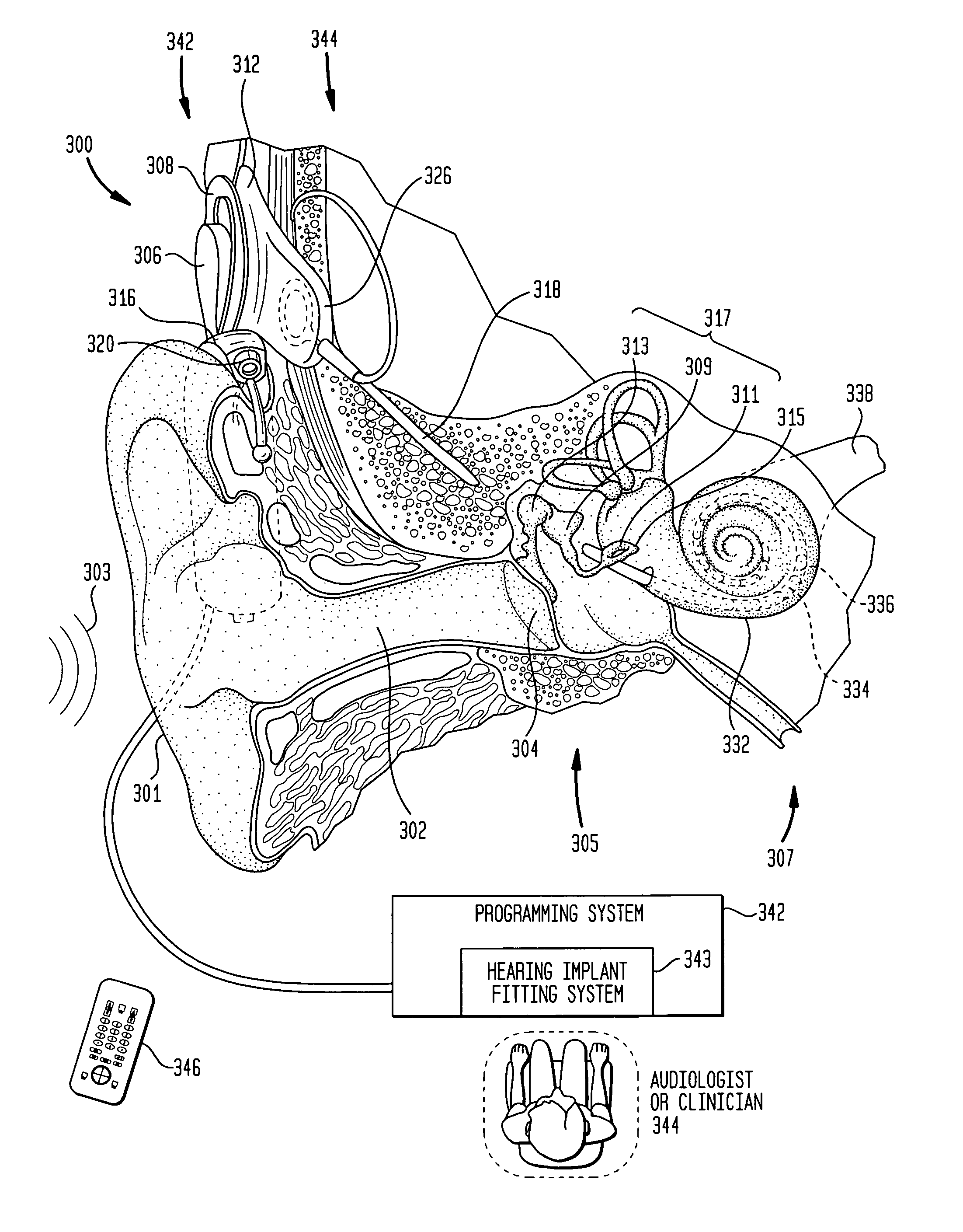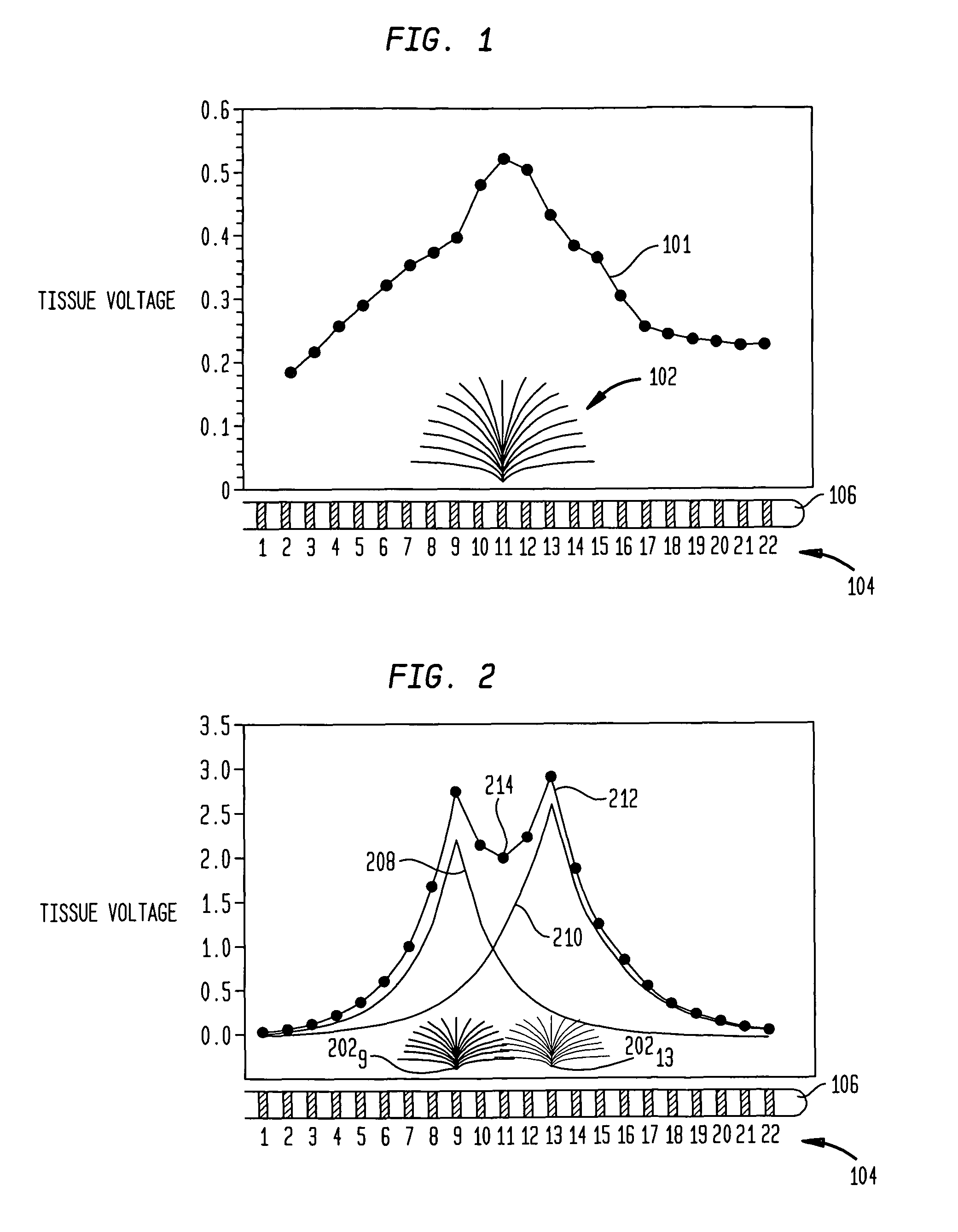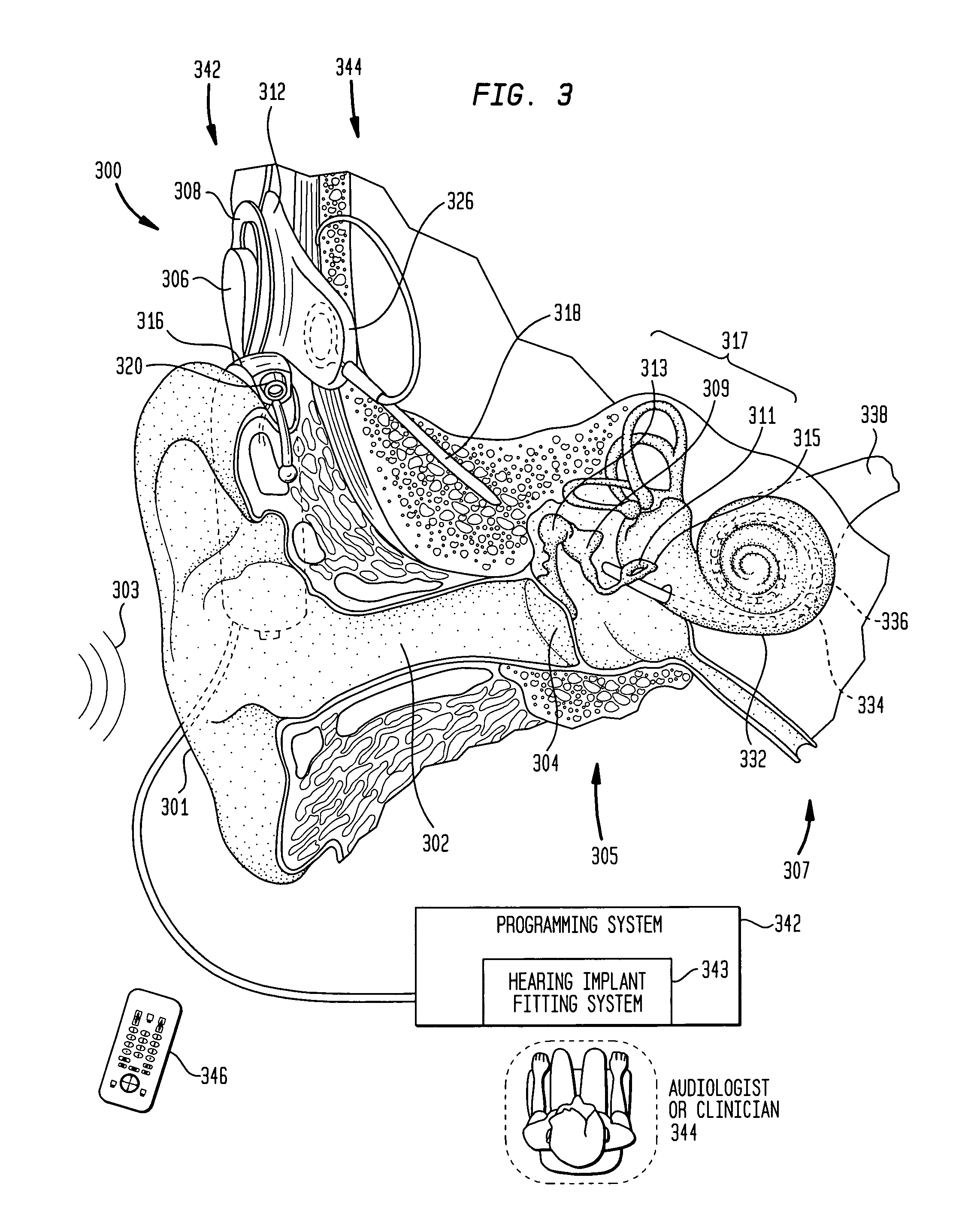Focused stimulation in a medical stimulation device
a stimulation device and focused technology, applied in the field of medical stimulation devices, can solve the problems of exacerbated problems, broad and complex actual locus of neural excitation, and limitations of conventional cochlear implants that may produce undesirable effects for recipients
- Summary
- Abstract
- Description
- Claims
- Application Information
AI Technical Summary
Benefits of technology
Problems solved by technology
Method used
Image
Examples
Embodiment Construction
[0029]Embodiments of the present invention are directed to a medical stimulation device such as a cochlear implant that, when operably implanted in a recipient's cochlear, provides stimulation of one or more spatially-restricted contiguous portion(s) of the spiral array of auditory nerve fibers in the cochlear, referred to herein as discrete stimulation regions. Each discrete stimulation region is defined by the constructive and / or destructive interference of stimulating and limiting signals simultaneously applied to electrode channels of an implanted electrode array, the stimulating and limiting signals being determined based upon transimpedance measurements of intracochlear electrode channels of the implanted electrode array representing specific spread functions of an individual recipient.
[0030]In certain embodiments the stimulating signal is applied through a targeted electrode channel; that is, one or more successive electrodes which is / are adjacent to the discrete stimulation ...
PUM
 Login to View More
Login to View More Abstract
Description
Claims
Application Information
 Login to View More
Login to View More - R&D
- Intellectual Property
- Life Sciences
- Materials
- Tech Scout
- Unparalleled Data Quality
- Higher Quality Content
- 60% Fewer Hallucinations
Browse by: Latest US Patents, China's latest patents, Technical Efficacy Thesaurus, Application Domain, Technology Topic, Popular Technical Reports.
© 2025 PatSnap. All rights reserved.Legal|Privacy policy|Modern Slavery Act Transparency Statement|Sitemap|About US| Contact US: help@patsnap.com



